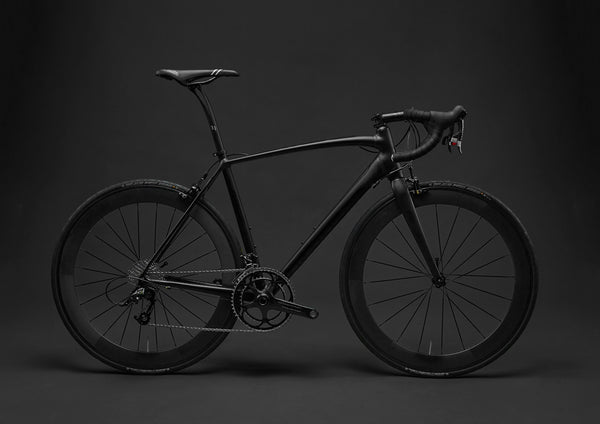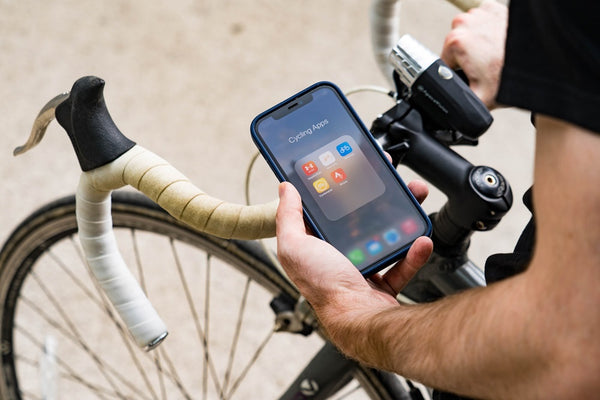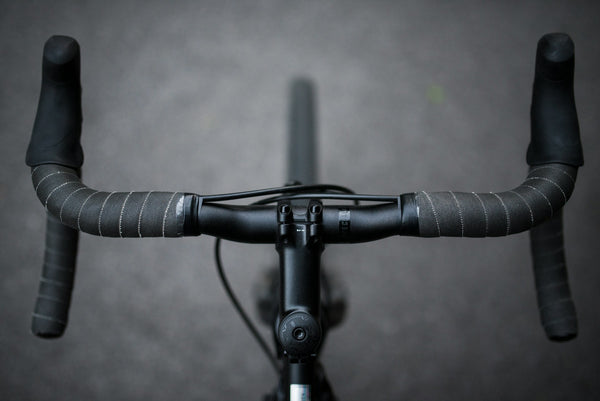Once you start riding enough that you want to focus on getting better and faster, it’s time to consider on- and off-the-bike training methods to improve your power output. It’s important to focus on increasing your strength, not just your leg strength, but full-body strength, especially your core, back, shoulders, and even your arms.
If you are looking to start bike racing or being very competitive on the fast group ride, then you’ll need to consider training to power by using a power meter to improve your power output.
Off-the-bike strength training
Cyclists have the reputation for avoiding weight training. The fear of adding too much extra bulk, especially in the upper body has scared away generations of weight-conscious cyclists. But most professional racers today understand the importance of using weights to improve core strength, and as a result, overall performance.
Even if cyclists don’t need huge pectorals and massive biceps, having a well-trained core will not only improve your performance, but also reduce the likelihood of stress injuries. If you revisit our blog about what muscles groups does cycling works, then you’ll get an idea of just why off-the-bike strength training can really benefit your riding and overall fitness.
How to train for cycling? Don’t dread the gym
For anyone who is serious about improving their leg strength and cycling performance, weights and gym work is certainly the most effective method. Focusing on the leg muscles by doing squats and deadlifts will improve important parameters like lactate threshold, anaerobic capacity, endurance, and reduce or delay the onset of fatigue.
That’s because when you are training the leg muscles using weights, and steadily increasing the amount of weight you are lifting, you are teaching your body to adapt to the heavier weights, which results in greater leg strength. And that leg strength translates into greater power output on the bike.
If you want to start proper weightlifting in the gym, it’s best to start off doing that in the off-season where your cycling volume will be reduced. That will give your muscles time to adapt to the workload. In other words, if you are new to weightlifting, you are going to be pretty sore to begin with, so be sure to start slowly and allow proper recovery time.
Keep in mind, it is important to be consistent and do regular gym sessions, but it is equally important to allow enough time between sessions to recover. In the winter seasons when on the bike work tapers off, toss in two gym sessions a week with at least two to three days between sessions. If you are just starting out lifting, make sure you do not start with too heavy of weights. Start with the goal of adding slightly more weight each session while reducing the number of reps since the idea is to stress the muscles as much as possible to get that strength increasing muscle growth.
Core workouts
Though hitting the gym to strength train for cycling power is the most effective method of leg strength training for cycling, there are a number of exercises you can do at home to work the legs and the core that will help you get faster on the bike as well. It will help if you have a pair of dumbbells that you can use much the same way you would the gym equipment. And in fact, if you have never done any weightlifting, it is a good idea to start with some home workouts to accustom your body to the strain of deadweight lifting.
Workouts like dumbbell deadlifts, step dumbbell lifts, dumbbell squats, planks, and burpees are a selection of exercises that can help toughen up your core and get your muscles accustomed to weightlifting.
On-the-bike training to power
It is possible to train your power effectively without using a power meter; there are probably even a few French pros in the peloton who still ride by feel and not power. But you’ll make much faster progress and be able to not only feel your improvements, but quantify them with the use of an accurate power meter.
Now that power meters are not nearly as expensive as they first were, they are a much more accessible piece of equipment that can materially help you become faster. How you use a power meter we covered in our blog about what is FTP and how you use it in your cycling training. When you first start training to power using a power meter, one of the first things you should do is test what is your current FTP or Functional Threshold Power. That will set the baseline for where your fitness is, and regular FTP testing will be able to show by how much you improve throughout the season.
Focus on intervals
If you are familiar with training zones, usually divided into five or six levels of intensity, then you have probably recently read that the latest data indicates that you should be training primarily in Zones 1 and 2 for up to 80% of the time. Zone 2 is an endurance-level pace during which you can keep up a conversation relatively easily.
The rest of the training ride, you should be pushing yourself much harder. The best way to do that is engage in interval training and hill repeats. Alternatively, if you can find a fast group ride, then you might not have to worry too much about structured interval training since keeping up with the fastest riders might accomplish the same level of effort without the mental tedium of intervals.
Hill repeats
Our preferred method of max effort is to do hill repeats. They’re tough, but in a way easier to do than plain intervals, since the gradient helps make it hard. And intervals on normal streets can often be interrupted by traffic or stop lights. Whereas, if you can find a hill that takes approximately 10 to 15 minutes to climb, then you can focus totally on your effort without having to worry too much about the traffic laws around you.
We like to do three to four 10-minute max efforts in a hill repeat training session. Ride up the hill as hard as you can for about 10-minutes, then roll back down and repeat that three to four times. It’s a great way to focus your work in Zones 4 and 5, and it is always extra fun to see the altitude gained at the end of a good training day in the hills.
Training for cycling - conclusion
Don’t be too impatient to see huge power increases, even if you are specifically training for a bike race. Just as with your off-season weight training, if you over-do it, you’ll likely injure yourself and burn out instead of improving. Leave enough recovery time between intense rides and focus on enjoying your cycling. The more you enjoy just being on the bike, the faster you will feel fitter.
































































































































































































































































